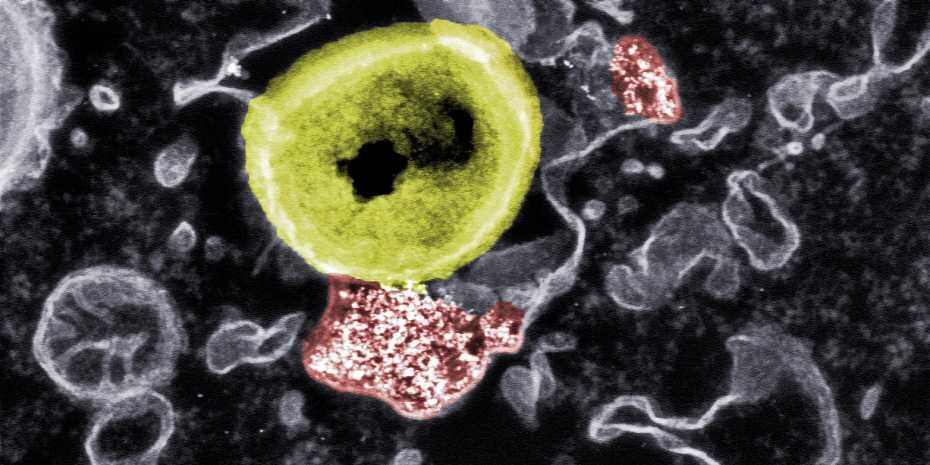Eliminating resistant bacteria with nanoparticles
Date: 23.4.2021
Novel nanoparticles developed by researchers at ETH Zurich and Empa detect multi-resistant bacteria hiding in body cells and kill them. The scientists' goal is to develop an antibacterial agent that is effective where conventional antibiotics remain ineffective.
 In order to track down the germs in their hideouts and eliminate them, a team of researchers from ETH Zurich and Empa is now developing nanoparticles that use a completely different mode of action from conventional antibiotics: While antibiotics have difficulty in penetrating human cells, these nanoparticles can penetrate the membrane of affected cells. Once there, they can fight the bacteria.
In order to track down the germs in their hideouts and eliminate them, a team of researchers from ETH Zurich and Empa is now developing nanoparticles that use a completely different mode of action from conventional antibiotics: While antibiotics have difficulty in penetrating human cells, these nanoparticles can penetrate the membrane of affected cells. Once there, they can fight the bacteria.
The team led by Inge Herrmann, a professor of Nanoparticulate Systems at ETH Zurich and researcher at Empa in St. Gallen, used cerium oxide, a material with antibacterial and anti-inflammatory properties in its nanoparticle form. The researchers combined the cerium oxide with a bioactive ceramic material known as bioglass and synthesized nanoparticle hybrids from the two materials.
The particles' exact mode of action is not yet fully understood. It has been shown that other metals also have antimicrobial effects. However, cerium is less toxic to human cells than, for instance, silver. Scientists currently assume that the nanoparticles affect the cell membrane of the bacteria, creating reactive oxygen species that lead to the destruction of the germs. Since the cell membrane of human cells is structured differently than that of bacteria, our cells are not affected by this process.























